What Is Behavior Change in Psychology? 5 Models and Theories
 Why do we behave the way we do?
Why do we behave the way we do?
Can the answer to this question help us change our less desirable behaviors?
Changing less desirable behaviors can help individuals, communities, and our environment.
However, behaviors can be highly ingrained and become habits we perform automatically without thinking. This poses a significant challenge to changing these behaviors.
To design effective interventions with which to change behavior, it is useful to understand the theories and models of behavior change.
This article will cover the leading theories and models, as well as an interesting study and some simple techniques to help your clients change their behavior.
Before you continue, we thought you might like to download our three Goal Achievement Exercises for free. These detailed, science-based exercises will help you or your clients create actionable goals and master techniques to create lasting behavior change.
This Article Contains:
- What Is Behavioral Change? 14 Examples
- 2 Psychology Theories About Changing Behavior
- 3 Scientific Models and Frameworks Explained
- Behavior Change Research: A Fascinating Study
- Why Is Behavioral Change Difficult?
- How to Elicit Behavior Change: 4 Techniques
- Helpful Resources From PositivePsychology.com
- A Take-Home Message
- References
What Is Behavioral Change? 14 Examples
Behavioral change is about altering habits and behaviors for the long term. The majority of research around health-related behaviors (Davis, Campbell, Hildon, Hobbs, & Michie, 2015) indicates that small changes can lead to enormous improvements in people’s health and life expectancy. These changes can have knock-on effects on the health of others (Swann et al., 2010).
Examples include:
- Smoking cessation
- Reducing alcohol intake
- Eating healthily
- Exercising regularly
- Practicing safe sex
- Driving safely
Other behaviors that are the target of change interventions are those affecting the environment, for example:
- Littering
- Leaving lights on
- Not recycling
Some behavior changes may be related to improving wellbeing, such as
- Reducing procrastination
- Incorporating regular self-care activities
- Being more assertive at work
- Going to bed earlier
- Practicing mindfulness
These are just a few examples of behavior changes that many have tried at some time in their lives. Some changes may be easy, but others prove quite challenging.
2 Psychology Theories About Changing Behavior
 There are many theories about behavior and behavior change.
There are many theories about behavior and behavior change.
In a literature review by Davis et al. (2015), researchers identified 82 theories of behavior change applicable to individuals. We will discuss the most frequently occurring theories and models in this article.
The theory of planned behavior/reasoned action
Fishbein and Ajzen developed the theory of reasoned action in the 1970s. This theory posits that behaviors occur because of intention, and intention is influenced by personal attitude and the perceived social norm (Madden, Ellen, & Ajzen, 1992).
This means that the more positive a person’s attitude toward changing their behavior and the more others are doing the desired behavior or supporting the behavior change, the stronger the person’s intention to change their behavior will be and the more likely they are to successfully change it.
In the 1980s, Ajzen extended this model to incorporate perceived behavioral control as an influencer of intention and sometimes as a direct influence on behavior (Madden et al., 1992).
Perceived behavioral control is a person’s confidence in their capability to perform the behavior and whether they believe they can overcome barriers and challenges. This extended model is known as the theory of planned behavior and accounts for more variation in behavior change than the theory of reasoned action (Madden et al., 1992).
The theories of planned behavior/reasoned action
The image above, adapted from Madden et al. (1992), shows the theory of reasoned action in gray and the addition of perceived behavioral control in brown to create the theory of planned behavior.
Here is a useful YouTube explanation of the theory of planned behavior.
Social cognitive theory
The social cognitive theory, proposed by Bandura in 1986, is an expansion of his earlier social learning theory, in which he states that many behaviors are learned by observing others in our social environment (Bandura, 1999).
For us to adopt a behavior, we have to pay attention to the behavior being modeled, remember it, and reproduce it. We may be rewarded for this, which reinforces the behavior, or punished, which reduces the likelihood we will do it again. However, Bandura acknowledged that there is more to adopting a behavior than this.
He expanded his theory to include personal factors of the individual: cognitive, affective, and biological. This includes an individual’s personal resources and abilities, their perceived self-efficacy (capability of performing the behavior), their expectations of the costs and benefits of changing their behavior, and the perceived barriers and opportunities that may help or hinder them.
Bandura emphasizes that we are the agents of our own development and change, and our perceived self-efficacy and outcome expectations play an important role in determining our actions. Our social surroundings can aid or inhibit our goals by providing opportunities or imposing restrictions, which in turn can affect our perceived self-efficacy and outcome expectations for next time (Bandura, 1999).
A model of this theory is shown below, highlighting a bidirectional relationship between an individual’s personal factors, the environment, and their behavior, with each factor influencing the others.
Social cognitive theory model
YouTube has this good summary video on Bandura’s social cognitive theory.
3 Scientific Models and Frameworks Explained
Theories can be used to build models and frameworks that have more practical applications and can be used to develop interventions. Three frequently occurring models are explained below.
Transtheoretical model
Otherwise known as the stages of change, this is the most frequently occurring model in the literature. The transtheoretical model was developed by Prochaska and DiClemente in the late ’70s and suggests six stages of behavior change (Prochaska, 1979; Prochaska & DiClemente, 1982).
Identifying the stage an individual is in helps health professionals, coaches, and therapists provide targeted interventions for that stage.
The six stages of change are:
- Precontemplation
The individual is not intending to change their behavior. They may be uninformed about the consequences of their behavior or lack confidence in their ability to change, sometimes because of previous failed attempts. - Contemplation
The individual is intending to change their behavior within the next six months. They can see the benefits of making a change but are also very aware of the disadvantages and challenges, which can keep them stuck in this stage. - Preparation
The individual is planning to change their behavior within the next month. They have usually taken some steps already, such as joining a support group, buying a self-help book, finding a coach etc., and have some form of plan in place. - Action
The individual has made significant changes to their behavior within the last six months, which has led to a different outcome in their health and/or wellbeing. - Maintenance
The individual continues to change their behavior enough to prevent relapse but is not putting as much time and effort into this as in the action stage.NOTE: Relapse can occur at any stage up to and including this one, going back to any of the earlier stages in the model. People most frequently return to contemplation or preparation for another attempt at changing their behavior (Prochaska & Velicer, 1997). - Termination
The individual is no longer tempted to use their old behavior as a coping method and feels confident in their ability to keep this change. Many people will struggle to reach this end state.
The transtheoretical model/stages of change
Here is a short YouTube animation about the transtheoretical model of change.
Information–motivation–behavioral skills model
This model was designed by Fisher and Fisher (1992) after reviewing the literature on changing AIDS-risk behavior. They propose three key factors that influence behavior change:
- Information about the behavior
- Motivation to perform the behavior
- Behavioral skills to perform the behavior
Information includes automatic thoughts about a behavior as well as consciously learned information. Motivation includes both personal motivation, the desire to change behavior for oneself, and social motivation, the desire to change behavior to fit into the social environment.
Information and motivation influence behavioral skills, which include objective skills and perceived self-efficacy. The combination of information, motivation, and behavioral skills influences behavior change (see image below).
As a helping professional, increasing the amount of information your client has, helping them find their motivation, or increasing their objective behavioral skills or perceived self-efficacy could help them change their behavior.
The information–motivation–behavioral skills model (Fisher & Fisher, 1992)
Behavior change wheel & COM-B model
In 2011, Michie, van Stralen, and West pulled together different behavior change frameworks to create a behavior change wheel. The aim of this was to provide guidance for policy makers and those performing behavioral interventions, based on the existing evidence.
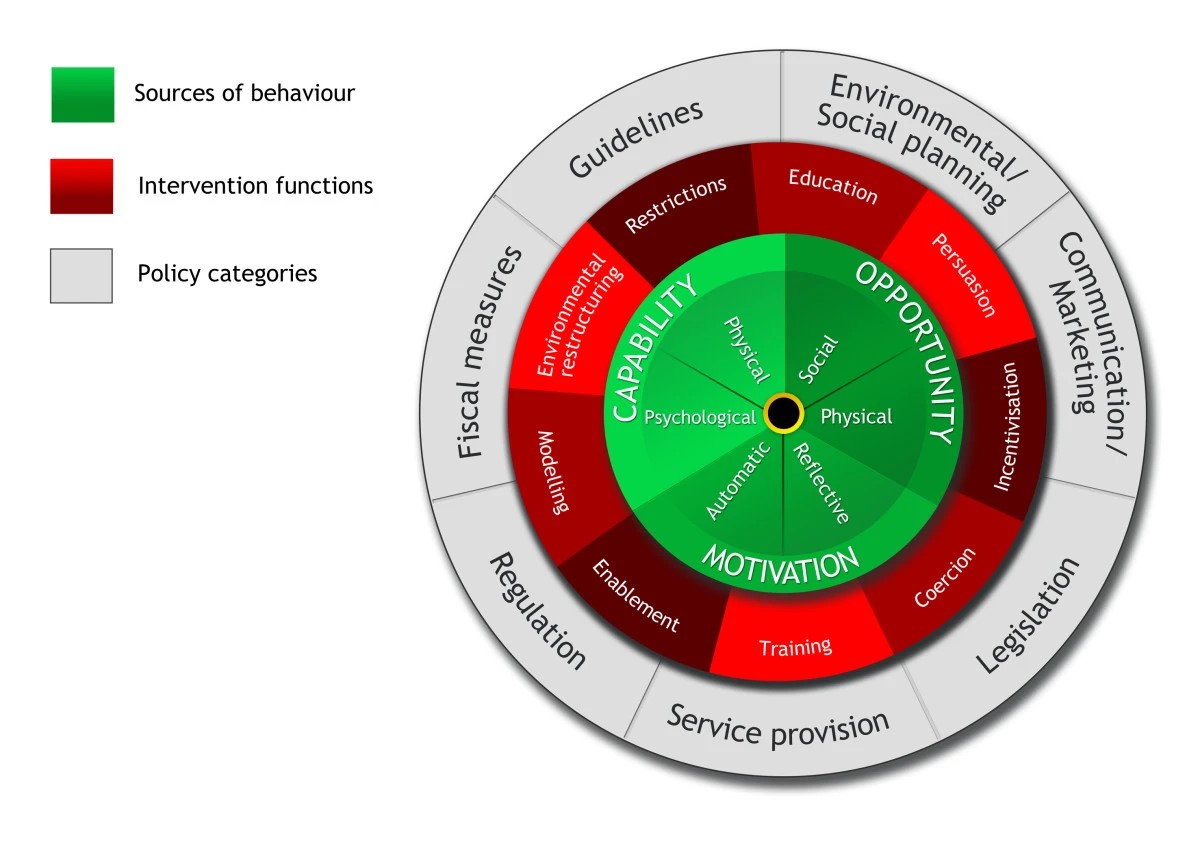
The behavior change wheel from Michie et al. (2011)
The hub of this wheel, the most relevant part for us, involves three conditions: capability, opportunity, and motivation.
- Capability includes both physical and psychological ability to perform the behavior, including having the necessary knowledge and skills.
- Opportunity is about the environment around the individual, which either facilitates or inhibits a behavior.
- Motivation is the drive and energy to perform a behavior, including habits, emotions, and thoughts.
These components have been put together to form the COM-B model, where opportunity and capability influence motivation, and all three factors influence behavior. Improving any of these areas could help your client change their behavior.
COM-B model (Michie et al., 2011)
Behavior Change Research: A Fascinating Study
 In a fascinating study, Verplanken and Roy (2016) tested the habit discontinuity hypothesis, which suggests behavioral changes are more likely to be effective when undertaken in a period when there are already significant life changes occurring.
In a fascinating study, Verplanken and Roy (2016) tested the habit discontinuity hypothesis, which suggests behavioral changes are more likely to be effective when undertaken in a period when there are already significant life changes occurring.
They wanted to see if interventions to promote sustainable behaviors were more likely to induce behavior change in people who had recently moved.
They studied 800 participants, half of whom had moved within the previous six months. The other half lived in the same areas and were matched for home ownership, house size, access to public transport, and recycling facilities, but had not recently moved.
The researchers gave an intervention on sustainable behaviors to half of the movers and half of the non-movers, and compared self-report data on behaviors before and after the intervention.
After accounting for environmental values, past behavior, habit strength, intentions, perceived control, personal norms, and involvement, they found that the intervention had the strongest effect on the self-reported sustainable behaviors of those who had recently moved within the last three months, termed the “window of opportunity.”
This supports the habit discontinuity hypothesis: behavioral changes are more likely when individuals are already undergoing significant life changes.
Why Is Behavioral Change Difficult?
The process of change can seem daunting, and many people find it difficult. It is important to remember that change is a process and not a one-off event. It can be difficult to make large changes in one step, but breaking up a large goal into smaller parts takes planning and commitment.
It’s challenging to stay motivated if the reward for behavior change seems far off in the future or is vague; for example, exercising more to reduce risk of heart disease in older age.
If there are no immediate rewards for changing a behavior, or if there are immediate costs, such as nicotine cravings when quitting smoking, this can make it difficult to stay motivated. This is why it is helpful to identify these issues in advance and create plans for when they occur.
As described in the theories and models above, there are many elements at play that determine how successful a behavior change will be. Having the intention does not necessarily translate into the behavior (Gollwitzer, 1999). A meta-analysis by Webb and Sheeran (2006) found that a medium-to-large change in intention leads to a small-to-medium change in behavior, known as the intention–behavior gap.
Factors that help with behavior change include the following (Gollwitzer, 1999):
- Goals should be as specific as possible, not vague.
- The goal should be in the immediate rather than the distant future.
- The reason for a behavior change should be for positive gain rather than the loss of a negative.
- The reason for behavior change should be for learning rather than for performance/achievement.
Change is difficult, and you will probably face setbacks during your progress. Habits are easy and helpful in freeing up resources by making small decisions and non-decisions. Disrupting habits requires removing triggers, inhibiting automated responses, and replacing habituated responses with more adaptable, positive behaviors (Orbell & Verplanken, 2020).
As this quote suggests, genuine change comes from within ourselves when we are willing to change our behavior.
Motivation and resilience are important factors in initiating change, overcoming resistance, and remaining determined. It is helpful to identify the psychological capital available to you to support you along the journey of behavioral change. Several approaches aim to help you change your habits.
Planning and goal setting are proven methods in mental health interventions for behavioral change (Keyworth et al., 2020).
Goal definition, e.g., SMART Goals, can effectively motivate and guide toward goal achievement (Kremer, Moran, & Kearney, 2019).
To achieve goals in the long run, it is important to establish new good habits and undo existing bad habits (Clear, 2018).
One way to adopt new habits can be by changing your environment. If you, for example, want to do more sports to become healthier and fitter, you can prepare before going to bed by arranging your sports clothes or other necessities.
Self-tracking and self-contracts are valuable tools to promote the development of habits. Monitoring your progress helps to centralize goal-relevant activities and keeps resources mobilized to remain committed (Locke & Latham, 2002).
If we want to change something in our lives, we will probably adjust how we behave. Otherwise, we will get more of the same. Nonetheless, we want to stress that you should also be grateful for your prior transformations and proud of current, positive behavior patterns.
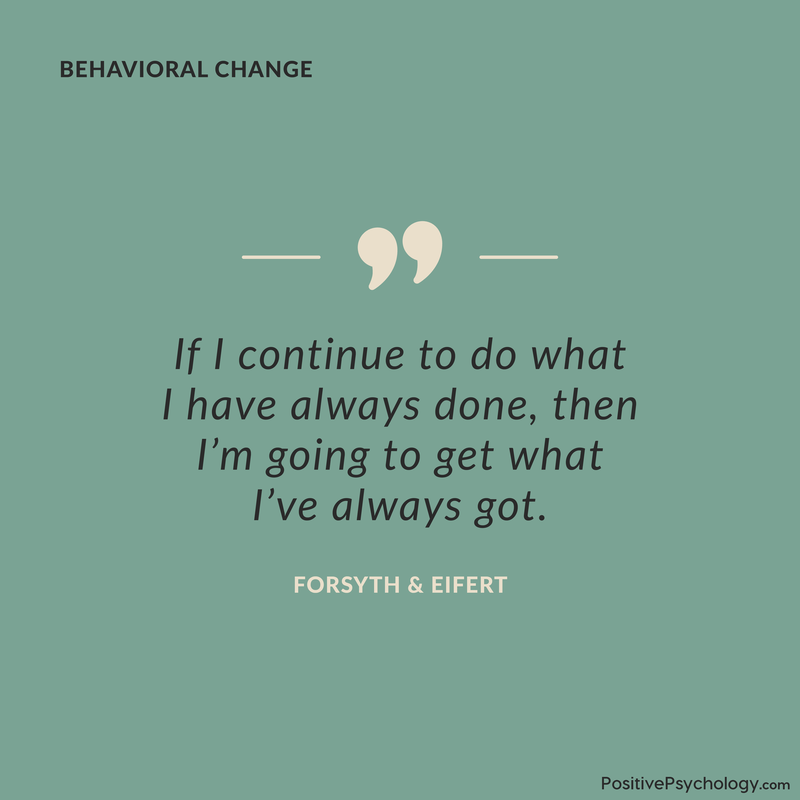
How to Elicit Behavior Change: 4 Techniques
 Although models provide a useful, evidence-based background for behavioral interventions, it is helpful to have behavior change techniques to apply these ideas.
Although models provide a useful, evidence-based background for behavioral interventions, it is helpful to have behavior change techniques to apply these ideas.
Here are some examples:
Implementation intentions
An implementation intention links a particular behavior to a specific situation: “If X happens, then I will do Y.” This means that if a specific situation occurs, the thinking process automatically reminds a person of the particular behavior they intended to apply.
It is a way to create new habits and has been effective in a multitude of situations (Gollwitzer, 1999). An example might be telling yourself, “If I see the lights on in an empty room, I will switch them off.” This means you are more likely to notice this situation and do something about it when it arises.
Motivational interviewing
Motivational interviewing helps individuals gain clarity in their thoughts and motivations for change, and identifies barriers to change so that solutions can be considered. This is known as change talk.
Motivational interviewing is a process of guiding rather than directing, helping a client to identify their strengths and goals, and improving their sense of self-efficacy and autonomy.
This approach is particularly useful in those who are reluctant or ambivalent about changing their behavior and outperforms traditional advice giving in helping clients to change their behavior (Rubak, Sandboek, Lauritzen, & Christensen, 2005).
Get inspired by TED talks
There are many fantastic TED talks on behavior change. Here are two examples.
In this wonderful talk, behavioral neuroscientist Tali Sharot explains why the common method used to promote behavior change – threatening people with the risks of continuing as they are – does not work: “Fear induces inaction, whereas the thrill of a gain induces action.”
She suggests that three key factors are important in changing our behavior:
- Social incentives
- Immediate reward
- Progress monitoring
In this nine-minute talk, American psychiatrist, neuroscientist, and author Judson Brewer suggests that mindfulness can be a useful method in behavior change. He invites us to notice our urge toward a certain behavior, be curious about why we have the urge, and decide whether the behavior is truly rewarding or whether we can let it go.
- Notice the urge.
- Get curious.
- Feel the joy in letting go.
- Repeat.
Helpful Resources From PositivePsychology.com
On our site, we have several resources that are invaluable for implementing behavior changes. To help, check out some of the following:
- Abstraction Worksheet
This worksheet presents three simple prompts to help clients clearly define and illustrate a desired behavior change and its consequences. - Motivational Interviewing: Querying Extremes Worksheet
This worksheet helps clients systematically explore possible negative consequences of continuing with a current behavior and possible positive consequences of changing their behavior. - Reward Replacement Worksheet
This worksheet helps clients identify the negative consequences of behaviors they use to reward themselves and select different reward behaviors with positive consequences to replace them. - Motivational Interviewing Worksheets
These worksheets present a series of motivational interviewing questions according to the DARN Acronym, which stands for Desires, Ability, Reasons, and Need.
If you’re looking for more science-based ways to help others reach their goals, this collection contains 17 validated motivation & goals-achievement tools for practitioners. Use them to help others turn their dreams into reality by applying the latest science-based behavioral change techniques.
A Take-Home Message
If your aim is to design interventions that are effective in helping clients change their behavior, then understanding the theories and models of behavior change is a useful first step.
Behavior change is more complicated than having the knowledge or even the right intentions to behave a certain way. There are so many factors at play, including an individual’s beliefs about their capabilities and barriers, as well as environmental factors, such as social norms.
We hope that this article gave you the guidance, inspiration, techniques, and resources you need to help your clients implement change. Don’t forget to download our three Goal Achievement Exercises for free.
- Bandura, A. (1999). Social cognitive theory: An agentic perspective. Asian Journal of Social Psychology, 2(1), 21–41.
- Clear, J. (2018). How To Start New Habits That Actually Stick. Retrieved from https://jamesclear.com/three-steps-habit-change.
- Davis, R., Campbell, R., Hildon, Z., Hobbs, L., & Michie, S. (2015). Theories of behaviour and behaviour change across the social and behavioural sciences: A scoping review. Health Psychology Review, 9(3), 323–344.
- Fisher, J. D., & Fisher, W. A. (1992). Changing AIDS-risk behavior. Psychological Bulletin, 111(3), 455–474.
- Gollwitzer, P. M. (1999). Implementation intentions: Strong effects of simple plans. American Psychologist, 54(7), 493–503.
- Keyworth, C., Epton, T., Goldthorpe, J., Calam, R., & Armitage, C. J. (2020). Delivering opportunistic behavior change interventions: a systematic review of systematic reviews. Prevention Science, 21(3), 319-331.
- Kremer, J., Moran, A. P., & Kearney, C. J. (2019). Pure sport: Sport psychology in action. Routledge.
- Locke, E. A., & Latham, G. P. (2002). Building a practically useful theory of goal setting and task motivation: A 35-year odyssey. American Psychologist, 57(9), 705.
- Madden, T. J., Ellen, P. S., & Ajzen, I. (1992). A comparison of the theory of planned behavior and the theory of reasoned action. Personality and Social Psychology Bulletin, 18(1), 3–9.
- Michie, S., van Stralen, M. M., & West, R. (2011). The behaviour change wheel: A new method for characterising and designing behaviour change interventions. Implementation Science, 6, 42.
- Orbell, S., & Verplanken, B. (2020). 13 Changing behavior using habit theory. The handbook of behavior change, 178.
- Prochaska, J. O. (1979). Systems of psychotherapy: A transtheoretical analysis. Dorsey Press.
- Prochaska, J. O., & DiClemente, C. C. (1982). Transtheoretical therapy: Toward a more integrative model of change. Psychotherapy: Theory, research & practice, 19(3), 276-288.
- Rubak, S., Sandboek, A., Lauritzen, T., & Christensen, B. (2005). Motivational interviewing: A systematic review and meta-analysis. British Journal of General Practice, 55(513), 305–312.
- Swann, C., Carmona, C., Ryan, M., Raynor, M., Baris, E., Dunsdon, S., & Kelly, M. P. (2010). Health systems and health-related behaviour change: A review of primary and secondary evidence. National Institute for Health and Clinical Excellence.
- Verplanken, B., & Roy, D. (2016). Empowering interventions to promote sustainable lifestyles: Testing the habit discontinuity hypothesis in a field experiment. Journal of Environmental Psychology, 45, 127–134.
- Webb, T. L., & Sheeran, P. (2006). Does changing behavioral intentions engender behavior change? A meta-analysis of the experimental evidence. Psychological Bulletin, 132(2), 249–268.
Let us know your thoughts
Read other articles by their category
- Body & Brain (49)
- Coaching & Application (57)
- Compassion (26)
- Counseling (51)
- Emotional Intelligence (24)
- Gratitude (18)
- Grief & Bereavement (21)
- Happiness & SWB (40)
- Meaning & Values (26)
- Meditation (20)
- Mindfulness (45)
- Motivation & Goals (45)
- Optimism & Mindset (34)
- Positive CBT (28)
- Positive Communication (20)
- Positive Education (47)
- Positive Emotions (32)
- Positive Leadership (18)
- Positive Parenting (4)
- Positive Psychology (33)
- Positive Workplace (37)
- Productivity (17)
- Relationships (46)
- Resilience & Coping (36)
- Self Awareness (21)
- Self Esteem (38)
- Strengths & Virtues (32)
- Stress & Burnout Prevention (34)
- Theory & Books (46)
- Therapy Exercises (37)
- Types of Therapy (64)
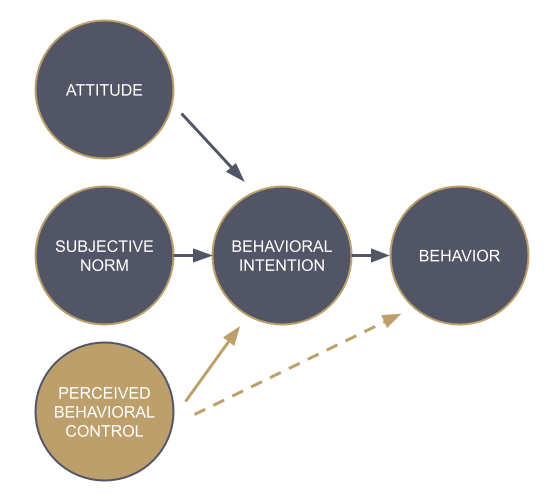

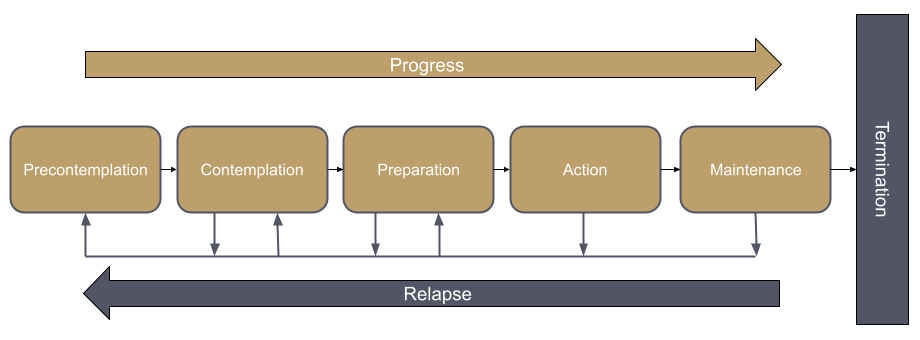
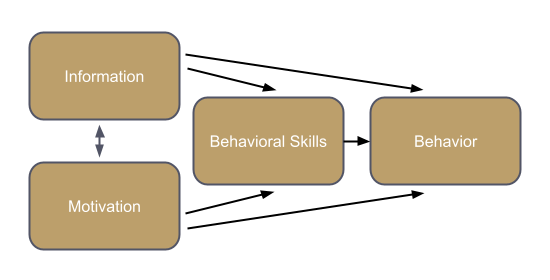
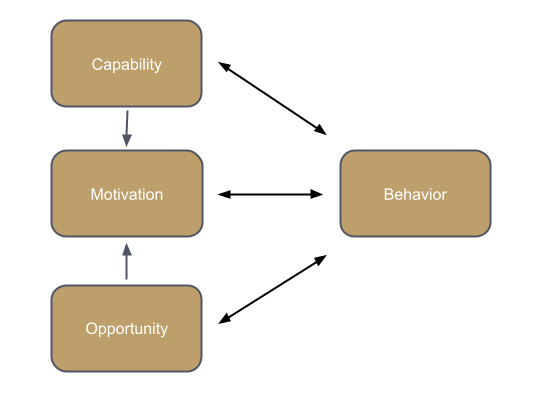

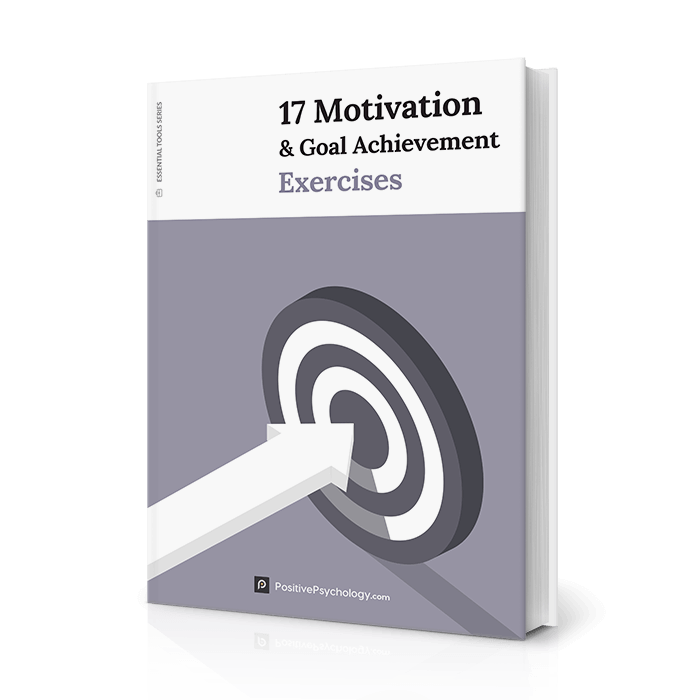



What our readers think
Hi Nicole,
I am a teacher trainer and wanted to know if these theories will work for teachers, who will be implementing a programme with the goal of building joyful reading habits in primary school children using storybooks.
Hi Bunty,
Absolutely! These theories, such as the Theory of Planned Behavior highlight how understanding intentions, social influences, and self-confidence can help shape positive reading habits. By incorporating these insights into your program, you can create an engaging environment that encourages children to embrace reading joyfully.
Warm regards,
Julia | Community Manager
Very detailed and intelligent article
This article is really doing great work.
Concerning with my course unit of Behavioural Change, as a Psychology student. A sum of Applaud to the author
Very helpful article, thank you.
TTM was actually developed in the late 70’s by Prochaska and DiClemente, not 1997 or the individual that you sited in this article. I’m currently doing research on that model for a graduate course and came across your article. Here is a site from Boston University with some great details about the model
https://sphweb.bumc.bu.edu/otlt/mph-modules/sb/behavioralchangetheories/BehavioralChangeTheories_print.html
cheers
Hi Darlene,
Whoops! Thanks for picking up this mistake and for the helpful reference.
We’ve corrected this now in the post 🙂
– Nicole | Community Manager